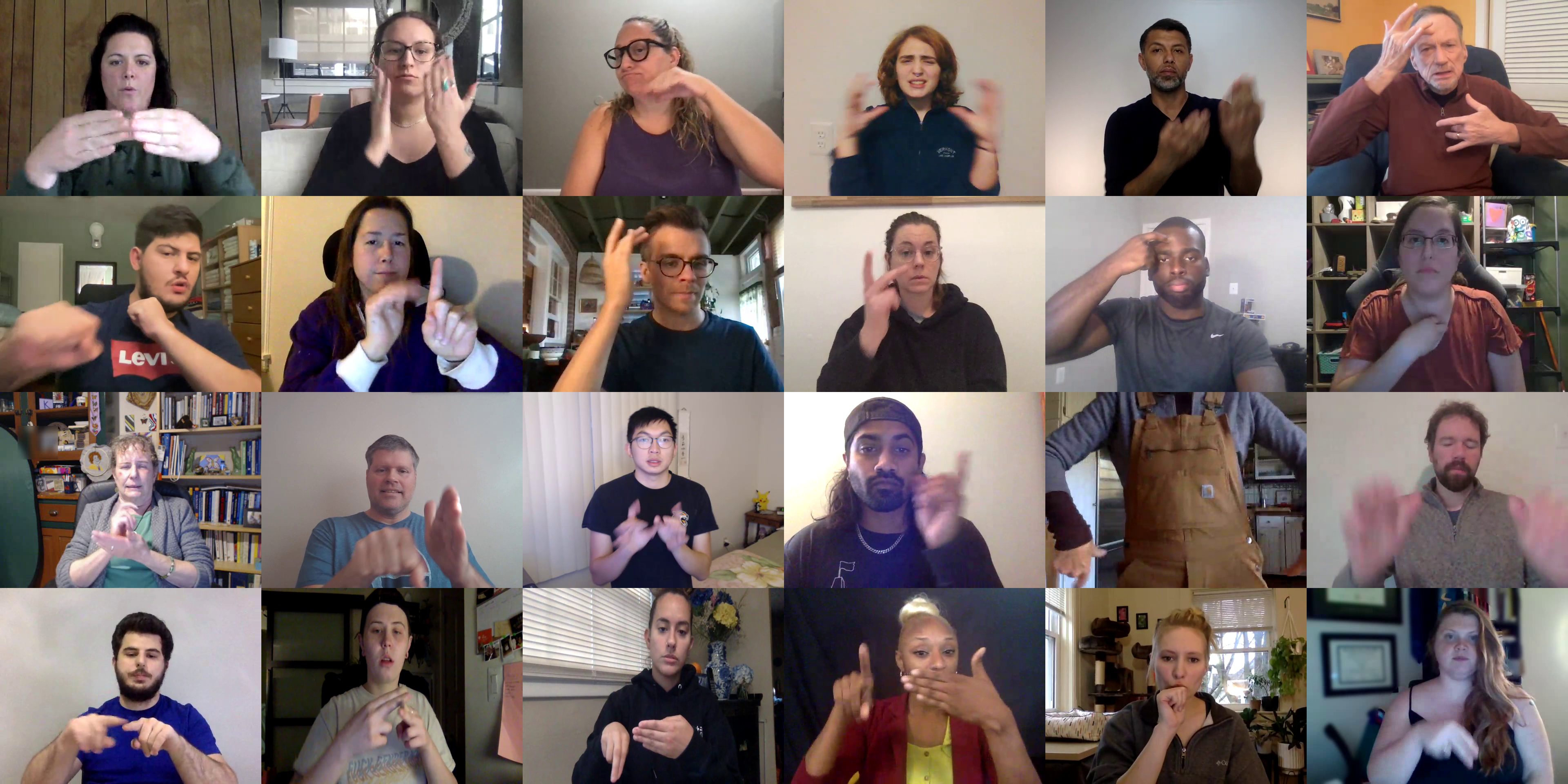Deaf and hard-of-hearing (DHH) individuals communicate in many ways, including through sign language. Along with being an accessible modality for DHH individuals, signed languages are culturally significant, forming a cornerstone of shared experience, cultural identity, and institutions for Deaf communities worldwide.
American Sign Language (ASL) is the primary sign language used in North America (and several other parts of the world). Like other signed languages, signs in ASL are composed of phonological elements including handshapes, hand and body movements, hand location, and facial expressions. Vocabulary size is large, and complex rules govern how these signs are put together to make sentence. These rules for combining words, phonology, and morphology into sentences are rich, and substantially different from English. Sign execution also varies among signers, across contexts, and through regions and dialects. ASL is a complete, natural language in its own right.
Signed languages play a central role in Deaf cultures and identity. Groups of people who primarily communicate in a signed language form distinct cultures as sociolinguistic minorities within the broader hearing majority. Within these communities, Deafness is a proud cultural identity. Despite the richness of signed languages and Deaf cultures, Deaf communities have a history of marginalization and oppression by the hearing majority. Many harmful misconceptions and biases exist within hearing communities about signed languages and Deaf people. For example, education systems have suppressed the use of signed languages, to the detriment of many deaf students.
Given this context, it is particularly important that sign language technologies are developed in partnership with Deaf communities and with an understanding of Deaf culture and signed languages. To this end, we involved Deaf collaborators in key roles at every step of this project, including conception, recruitment, participation, analysis, and dissemination. We encourage those using this dataset to educate themselves on Deaf culture and American Sign Language in order to conduct research and build systems that are useful to Deaf community members while minimizing harms.
As an entry point to more information on Deaf cultures and sign languages, please check out the following resources.
- The Deaf Community: An Introduction – National Deaf Center (opens in new tab)
- Community and Culture Frequently Asked Questions – National Association of the Deaf (opens in new tab)
- Home Page – World Federation of the Deaf (opens in new tab)
- Home Page – Museum of Deaf History, Arts & Culture (opens in new tab)

